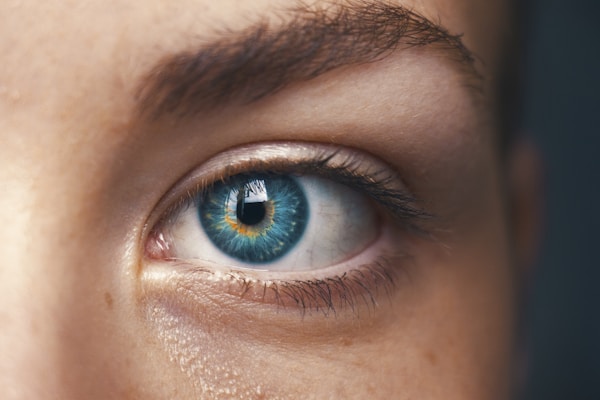Eye health is an important part of our overall health. Our eyes are responsible for detecting light, allowing us to see the world around us. But did you know that our eyes can also tell us a lot about our genetic makeup? Understanding the link between DNA and eye health is important for maintaining good vision. Keep reading to learn more about how genetic testing can help you protect your eyes.
Some genetic mutations can affect eye health.

Some genetic mutations can affect eye health, potentially leading to vision problems and eye diseases. For example, mutations in the ABCA4 gene have been linked to a condition known as Stargardt disease, which causes progressive vision loss. Other genetic mutations can affect the development of the eye, leading to abnormalities such as cataracts or glaucoma. While some of these genetic mutations are inherited, others can occur spontaneously or as a result of environmental factors. Understanding the genetic factors that contribute to eye health can be important for preventing and treating eye diseases, as well as improving outcomes for procedures such as Lasik eye surgery in Torrance.
Age-related macular degeneration (AMD) is influenced by DNA.
Age-related macular degeneration (AMD) is a leading cause of vision loss in older adults. Recent studies have shown that DNA plays a significant role in the development and progression of AMD. Specifically, certain DNA sites free of mutations have been found to contribute to the risk of developing AMD. These DNA sites, known as single nucleotide polymorphisms (SNPs), can affect genes that are involved in inflammation, oxidative stress, and other processes that contribute to the development of AMD.
By understanding the role of DNA in the development of AMD, researchers hope to identify new treatments and prevention strategies for this debilitating disease. Genetic testing and analysis can help identify individuals who are at increased risk for AMD, allowing for earlier intervention and management.
Cataracts are influenced by DNA.

Cataracts are a common eye condition that causes clouding of the eye’s natural lens, leading to blurred vision and reduced visual acuity. While aging and environmental factors such as exposure to UV light and smoking are known risk factors for cataracts, recent research has also shown that genetics play a role in the development of cataracts. Specifically, certain variations in DNA have been linked to an increased risk of developing cataracts, particularly in older adults. Understanding the genetic factors that contribute to cataracts can help improve our understanding of this condition and potentially lead to new treatments or preventive measures.
DNA testing may also play a role in identifying individuals who are at higher risk for cataracts. By identifying individuals who have these genetic variations, doctors can provide earlier and more targeted interventions to help prevent or delay the onset of cataracts.
Glaucoma may be caused by DNA damage.
Glaucoma is a group of eye diseases that can cause vision loss and blindness by damaging the optic nerve. Recent research suggests that DNA damage may be a contributing factor to the development of glaucoma. Specifically, it is thought that the accumulation of DNA damage in the cells of the optic nerve may lead to cell death and damage to the nerve fibers that transmit visual information to the brain.
While the exact causes of glaucoma are still not fully understood, this new research provides important insights into the mechanisms behind this debilitating disease. Understanding the role of DNA damage in glaucoma may lead to the development of new treatments and preventive measures that can help to protect the nerve and preserve vision.
Certain eye diseases are inherited.
Certain eye diseases are inherited, which means that they can be passed down from parents to their children through their genes. These diseases can affect various parts of the eye, including the retina, optic nerve, and lens. Some common inherited eye diseases include glaucoma, macular degeneration, retinitis pigmentosa, and cataracts.
Having a family history of inherited eye disease can increase your risk of developing the condition. It is important to have regular eye exams and to inform your eye doctor of any family history of eye disease. Early detection and treatment of inherited eye diseases can help prevent or slow down vision loss and preserve your eyesight.
Overall, understanding the link between DNA and eye health is essential to help mitigate and prevent vision problems. Genetic testing can provide valuable insight into individual risk, which can help guide decisions about lifestyle and medical intervention. Ultimately, investing in knowledge about genetic risk can be the key to maintaining healthy vision for the long term.




